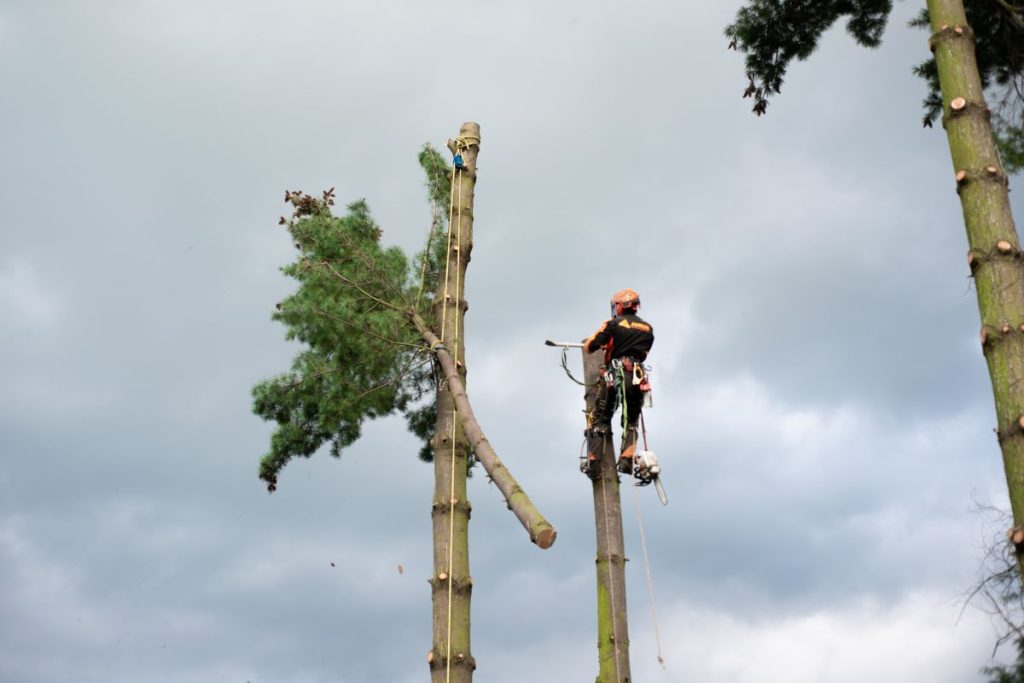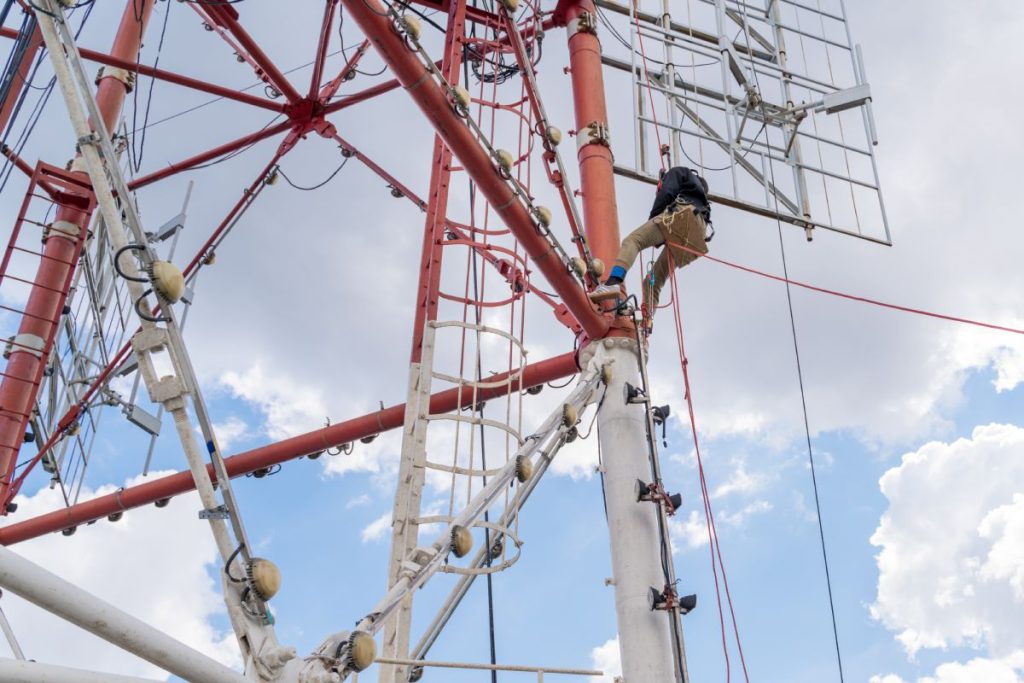There are a great many trades, professions, and tasks that require working at height. This is defined as any job where, if no safety precautions were taken, a fall could result in serious injury or even death. Whether you are a roofer, arborist, electrician or work in a whole host of other professions, working at height may well be a requirement of your job.
But just how high is working at height? And what safety precautions should be in place to keep you from harm? Read on to find out more about working at height, and what PPE you should have to stay out of harm’s way…
How high is working at heights in Australia?
When people hear the term working at height, they often picture jobs that involve working at a massive height from the ground. Jobs like roofing, painting the exteriors, or cleaning the windows of impressively tall buildings. While these would absolutely count as working at height, technically the standards are far less high to qualify than you might imagine.

Working at height actually refers to any height of 2 metres or more. If there is a risk of you falling 2 metres, you are working at height and suitable precautions must be taken to preserve your safety. Jobs that may involve working at height include:
- Scaffolders – if scaffolding is required, it is a safe bet that you will be working at a height greater than 2 metres. Scaffolds are structures meant to make working in these conditions safer as well as letting you accomplish your task more easily. However, you still need to make sure that proper health and safety practices are obeyed.
- Carpenters – a lot of joining work such as putting up stairs, doorways, and more involves working at height. Putting up these structures is essential work, and may often feel like it is not that high, but a fall here could still lead to serious injury.
- Excavation jobs – it is not only working in the air that counts as working at height. Those working with trenches and excavations deeper than 2 metres are again at risk of a fall.
- Electricians – while some electricians will not do many jobs that involve working at height, others may spend most of their time working with power lines, or even just installing light fixtures up a ladder. This can be some of the most dangerous height work, as not only are you up in the air but also working with highly dangerous electricity.
- Decorators – decorators and painters will often spend time up a ladder, working at more than 2 metres to carry out any number of jobs.
- Window cleaners – window cleaners may work at any height, with massive buildings and skyscrapers needing cleaning much like a bungalow or smaller home.
- Telecommunications technician – another common job that involves working at height is that of a telecoms technician. Installation and maintenance are required for phone lines across the country, and this is almost always over 2 metres high.
Any one of these jobs and more may require taking a working at heights training course, as well as taking many other legal and common sense precautions to keep you safe.

What are the rules for working at heights in Australia?
Working at height is dangerous, and the duty to keep you safe when working at height rests on your company or employer. Working at height is one of the leading causes of injury and death in Australia, so it is not a danger that should be ignored, overlooked, or taken lightly.
It is up to your employer to follow the legal guidelines for working at height, but you should also check that you are taking all the relevant precautions to stay safe. Whether you are working in construction for a big commercial company, or removing a tree in someone’s garden, the rules for working at height remain the same.
Many of the rules for working at height in Australia come from the 2011 Work Health and Safety Act, which lays out what an employer must do to keep their workers safe. In essence, this involves identifying, eliminating, and minimising risks wherever possible and reasonable. This means that only works that absolutely must be carried out at height should be. Otherwise, groundwork is required whenever you possibly can.
When working at height is necessary, you must have precautions in place such as:
- A fall prevention device – scaffolding, barriers, or elevated work platforms should be used if at all possible, making a fall less likely than if they were not in use. If you fail to put up barriers and someone falls, you are liable and guilty of failing to protect your workforce.
- A work positioning system – if a fall prevention device like scaffolding is not possible, you must use a work positioning system such as an industrial rope access system instead.
- A fall arrest system – if you are not in a position to use either of these better options, you must at the very least have a fall arrest system in place. This means something that will stop you if you do fall, such as a net or a catch platform.
You must also properly train your workforce to work at height. If you have not been fully trained then your employer has not taken all precautions to keep you safe.

What PPE is needed for working at heights?
Your PPE, or personal protection equipment, is an essential part of so many jobs. The right footwear, headgear, and protective gloves or clothes may be required in many professions, and working at height is a key example of this. Some of the PPE you may need for working at height include:
- Non-slip footwear
- Head protection
- A safety harness
- Face and eye protection
- Breathing equipment
- Anchor points connecting devices and more.
Always check the regulations for any job working at height, and make sure that you have all required PPE and precautions in place before you leave the ground.
Final thoughts
Working at height is often essential in so many professions, but it is also extremely dangerous. You should never work at height without the proper safety precautions in place, the right equipment, and full training on how to stay safe. If you may be asked to work at height in the future, take a working at heights training course and you may just save your life.







